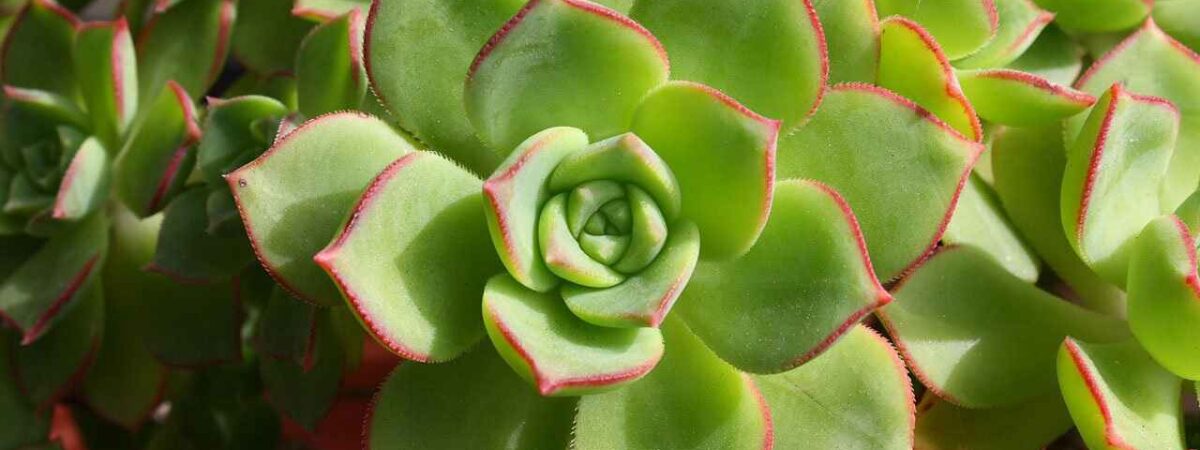Plant Overview
The echeveria Or scientifically termed the echeveria spp. is a slow-growing, beautiful, drought-tolerant succulent that rarely attains larger than one foot in height or diameter.
Belonging to the family of Crassulaceae family, these echeverias are native to Central America, Mexico, and northwestern South America. So they require full sun and desert conditions to thrive.
Numerous echeveria varieties grow worldwide but the most common one is blue-gray or gray-green. This plant is specifically grown for its waxy that is found in shades of green or purple along with different types developing stunning patterns.
Most cultivars of this plant generally bloom in the summer and bear clusters of bell-shaped flowers on tall stems.
Types of echeveria
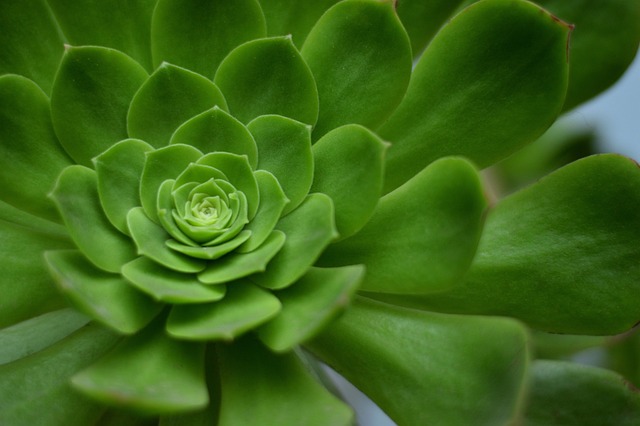
Molded wax agave (Echeveria agavoides)
The molded wax agave is one of the popular echeveria cultivars that form a singular, dense rosette of triangular leaves with a terminal spine.
This variant has left in shades of green but they can turn red in full and bright sunlight. This plant bears Pinkish-red to orange-colored flowers that bloom in summer on 12-inch-long cymes.
Echeveria ‘Afterglow’
Popularly grown for its wide lavender leaves with pink edges, the ‘Afterglow’ is also one of the popular variants that grow up to 16 inches in diameter.
This is a popular plant for any succulent garden, that bears flowers in ranges of color from orange to red that forms below the lower leaves.
Echeveria ‘Perle von Nurnberg’
The ‘Perle von Nurnberg’ is one of the popular cultivars of Echeverias that is widely recognized for its fleshy leaves that change their color from blue-green to red or sometimes purple.
The leaves of this variant are rounded in shape along with sharp points that feature rosettes that span up to eight inches in diameter.
Echeveria ‘Black Prince’
The ‘Black Prince’ variant of Echeverias produces clumps of rosettes along with dark, triangular leaves.
This variant blooms dark red flowers on short stalks in the late fall or early winter.
Mexican Snowball (Echeveria elegans)
The Mexican snowball cultivar of Echeverias is popularly recognized for its beautiful, compact rosettes which are made up of blue-green leaves shaped like spoons.
When these plants are grown in full sunlight, the leaves can turn a pinkish color. The slim pink stems of this variant bloom flowers of pink to red coloring with yellow tips from late winter to mid-summer.
How to care for echeveria?
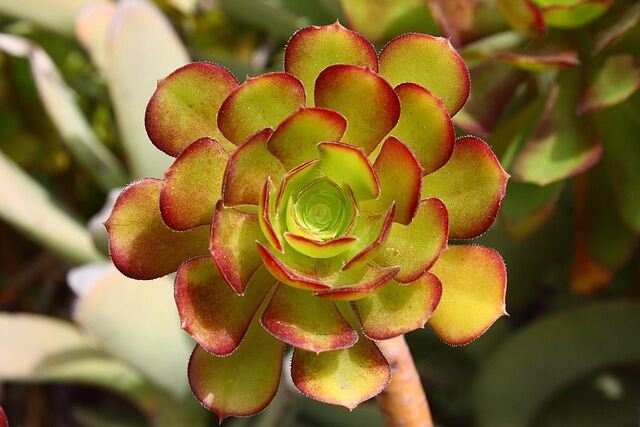
Light
Echeverias need a substantial amount of light to thrive and grow. They require at least four to five hours of bright, direct sunlight regularly to grow.
If this plant do not get the full sun that they require, they may become elongated and leggy, and they are unlikely to bloom flowers. So it is suggested to move your echeveria succulent outdoors during the summer months to make it flourish.
If you are moving your plant outdoors after overwintering, harden off your plant, giving it a gradual transition. Intense afternoon sunlight can cause sunburn in your plant, so it is recommended to place your plant where it receives a bit of shade when the sun is strongest.
Soil
This succulent needs a well-draining, porous growing soil to keep excess moisture away from the roots. You can use standard cactus potting mixes, which can be found easily at most nurseries and garden centers, which are sufficient for the better growth of echeverias.
You can also create a cactus mix by yourself by combining three parts of regular potting soil along with two parts of coarse sand and one part of perlite.
So echeverias make an ideal houseplant that can grow in garden beds as well, as long as they are growing in the well drained soild the pH is 6.0 or slightly acidic.
Water
Watering is the most critical aspect of any succulent care and thus for proper echeveria care.
Like most succulents, these succulents do not require much water, but they don’t like to be too dry also. If the leaves of the plant starts to wrinkle, it’s showing a sign that the plant needs water.
But it is always better to under-water your echeverias than to overwater them, as they can quickly be suspected to root rot if overwatered.
So before watering, wait until the soil has completely dried out, and then provide your plant a good soaking by letting the water stream through the pot’s drainage holes.
Depending on the plant size, you can water 1/2 cup to 1 cup of water every seven to 10 days during the growing season. If you are using a saucer under the pot, you should make sure to empty any standing water that drains through.
Echeveria required to be watered during the whole summer months more frequently than in winter. In winter, a little amount of water is just enough to prevent any wrinkled leaves, about once a month.
Temperature and Humidity
Echeverias ideally grow in hot, dry conditions. They do not tolerate cold temperatures or cold drafts as well. Too much humidity also can lead to root rot.
They can thrive in the average household temperature and humidity levels but don’t place your plant in a humid location, like a bathroom or laundry room.
Most echeveria varieties are cold hardy to USDA zone 9a and they also can grow in the ground with average winter temperatures not colder than 50 F. In wintery weather regions, it is suggested to move the plant inside when frost threatens.
Fertilizer
Echeveria don’t require regular fertilizing as these plants are accustomed to growing in nutrient-poor soil. If these plants are over fertilzee, they may be susceptible to fertilizer burn.
Occasional and partial fertilizing especially during the spring and summer can help your echeverias during their active growing period. but you should be cautious.
You can use a cactus and succulent fertilizer or a controlled-release balanced 20-20-20 liquid fertilizer that is diluted two to four times more than usual in water. You can also use a low-nitrogen fertilizer for young plants.
How to propagate echeveria?
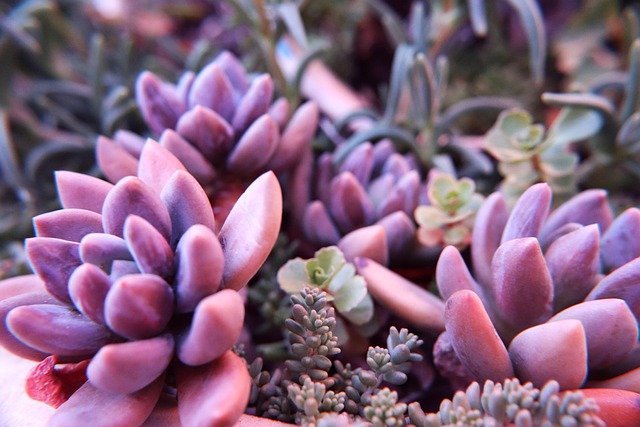
There are a lot of ways to propagate echeveria to make new plants. While it is possible to propagate your plant from a cutting, you may also need to top the entire plant.
Don’t worry, this are very easy to root, and the remaining stem grows new rosettes.
You can also propagate your plant from leaves as well, but this may take a very long time to produce a sizable plant. No matter, whether growing from the leaves or stem cuttings, you should place it in rooting hormone first for best results.
Another common method for your plant propagation is to remove the pups which are formed around the base carefully. Plant these pups in well-draining, loose soil, and water them lightly as per the above guidance until you begin to see new growth.
Conclusion
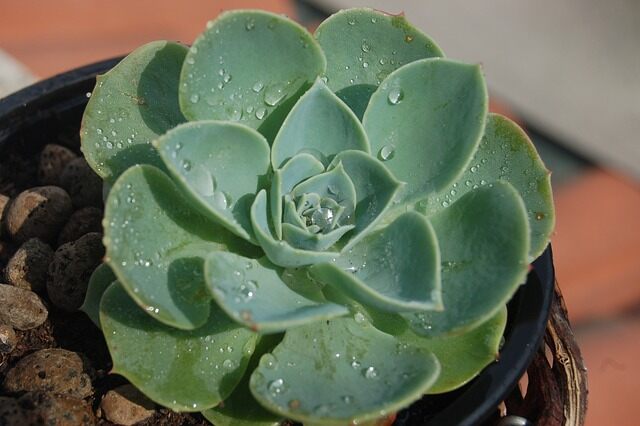
Echeverias are very unique and gorgeous plants. They can also survive for many years with the proper care.
So follow the above guidelines and grow echeverias in your garden or as an indoor houseplant and let us know how it’s going.
You may also like to read
How to grow and care for crassula succulent? – An effective guide
How to Grow Jade Plant? Plant the Decorative Houseplant Indoors!

